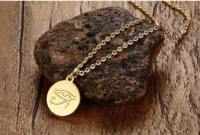The Heart Behind Every Handcrafted Jewel is a journey into the artistry and passion that defines exquisite jewelry making. Each piece tells a story, intricately crafted with care and attention to detail, reflecting the unique vision of its creator. In a world flooded with mass-produced items, handcrafted jewelry stands out as a testament to individuality and craftsmanship, connecting the wearer to the artistry behind each creation.
This exploration reveals the processes, challenges, and the sheer dedication that artisans invest in their work. From the selection of materials to the final polish, every step is imbued with emotion and skill, showcasing the heart that beats behind each piece. As we delve deeper, we will appreciate not only the beauty of these jewels but also the stories they carry, making them truly special.
In today’s fast-paced world, effective communication is more essential than ever. Whether in a professional setting or personal interactions, the ability to convey thoughts clearly and effectively can significantly impact relationships and outcomes. A casual but formal tone can strike the right balance, making conversations approachable yet respectful. This article explores key aspects of communication, including the importance of clarity, active listening, non-verbal cues, and adapting your style to fit different situations, all while maintaining a casual formal language style.
### The Importance of Clarity
Clarity is the foundation of effective communication. When we communicate clearly, we minimize misunderstandings and ensure our message is conveyed as intended. Here are some tips to enhance clarity in your communication:
1. Be Concise: Avoid unnecessary jargon and lengthy explanations. Instead, aim to be straightforward. For instance, instead of saying, “I would like to propose that we perhaps consider the possibility of organizing a meeting to discuss the project status,” you could say, “Let’s set up a meeting to discuss the project status.”
2. Organize Your Thoughts: Before speaking or writing, take a moment to organize your thoughts. Having a clear structure helps in delivering your message effectively. A simple Artikel can be beneficial, especially when discussing complex topics.
3. Use Simple Language: Opt for words that are easy to understand. This does not mean you should dumb down your message; rather, you should aim to make it accessible to a wider audience. For example, use “help” instead of “assist” when appropriate.
4. Be Specific: When making requests or stating opinions, be specific about what you mean. Instead of saying, “I need this soon,” say, “I need this report by Friday afternoon.” Clear timelines and expectations eliminate confusion.
### The Role of Active Listening
Active listening is an often-overlooked aspect of communication. It involves fully engaging with the speaker and showing that you value their input. Here’s how you can enhance your active listening skills:
1. Give Full Attention: When someone is speaking, put away distractions such as your phone or computer. This demonstrates respect and allows you to focus entirely on the person speaking.
2. Use Non-Verbal Cues: Nodding, maintaining eye contact, and leaning slightly forward can signal that you’re engaged and interested. These non-verbal cues encourage the speaker to continue sharing their thoughts.
3. Paraphrase and Summarize: After the speaker has finished, paraphrase what you’ve heard to ensure you understood correctly. This also shows the speaker that you are actively engaged in the conversation. For example, “So what you’re saying is that you feel the project is behind schedule, correct?”
4. Ask Open-Ended Questions: Encourage deeper discussion by asking questions that require more than a yes or no answer. This not only clarifies your understanding but also invites the speaker to share more information.
### The Power of Non-Verbal Communication
Non-verbal communication can significantly influence how your message is received. It includes body language, facial expressions, gestures, and tone of voice. Here are some key points to consider:
1. Body Language: Your posture and gestures can convey confidence or uncertainty. Standing or sitting up straight, with open arms, suggests that you are approachable and confident. Conversely, crossed arms or avoiding eye contact may signal defensiveness or disinterest.
2. Facial Expressions: Your face can communicate a range of emotions. A warm smile can create a friendly atmosphere, while a furrowed brow might suggest confusion or concern. Be mindful of your expressions to ensure they align with your verbal message.
3. Tone of Voice: The way you say something can be just as important as what you say. A calm and steady tone can convey authority and confidence, while a shaky or high-pitched voice might indicate nervousness. Practice modulating your tone to match your message effectively.
4. Cultural Differences: Be aware that non-verbal cues can vary significantly across cultures. What is considered respectful or appropriate in one culture may be perceived differently in another. It’s essential to educate yourself about these differences when communicating with people from diverse backgrounds.
### Adapting Your Communication Style
Every situation and audience is unique, and adapting your communication style is crucial to ensure your message is received well. Here are some strategies for adapting your approach:
1. Know Your Audience: Consider the background and preferences of your audience. For instance, when speaking to a group of industry professionals, you might use more technical language than you would with a general audience.
2. Adjusting Formality: In a professional setting, it’s important to strike the right balance between casual and formal. While a relaxed tone can foster openness, maintaining professionalism is key. Use a friendly yet respectful tone when addressing colleagues or clients.
3. Be Mindful of Context: Different situations call for different communication styles. A brainstorming session may allow for a more relaxed dialogue, while a formal presentation will require a more structured and polished approach.
4. Solicit Feedback: Don’t hesitate to ask for feedback on your communication style. This can help you identify areas for improvement and adapt your approach based on the responses you receive.
### Conclusion
In conclusion, effective communication is a skill that can be developed over time. By focusing on clarity, practicing active listening, paying attention to non-verbal cues, and adapting your style to fit various situations, you can significantly enhance your communication abilities. Remember, the goal is to convey your thoughts and ideas in a way that is both approachable and respectful, ensuring meaningful interactions in both personal and professional settings. As you continue to refine your skills, you’ll likely notice a positive impact on your relationships and overall success in your communication endeavors.
In conclusion, the essence of The Heart Behind Every Handcrafted Jewel lies in the passion and dedication of the artisans who create them. These pieces are more than just adornments; they are expressions of craftsmanship and narratives of creativity. As we celebrate the artistry involved, it becomes clear that each handcrafted jewel holds a unique place in both the art world and in the hearts of those who wear them. So, the next time you encounter these treasures, remember the heart that brought them to life.

Query Resolution: The Heart Behind Every Handcrafted Jewel
What defines handcrafted jewelry?
Handcrafted jewelry is defined by its unique design, meticulous detail, and the fact that it is made by skilled artisans rather than mass-produced.
How do artisans choose their materials?
Artisans typically choose materials based on quality, color, and texture, ensuring that each piece reflects their artistic vision and meets their standards.
What challenges do jewelers face in crafting handmade pieces?
Jewelers face challenges such as sourcing quality materials, maintaining a balance between creativity and market trends, and the time-consuming nature of the crafting process.
How can I identify authentic handcrafted jewelry?
Authentic handcrafted jewelry often features unique elements, variations in design, and signs of skilled workmanship, unlike uniform pieces from mass production.
What is the significance of the story behind a handcrafted jewel?
The story behind a handcrafted jewel adds emotional value, connecting the wearer to the artisan’s inspiration and the journey of its creation.



